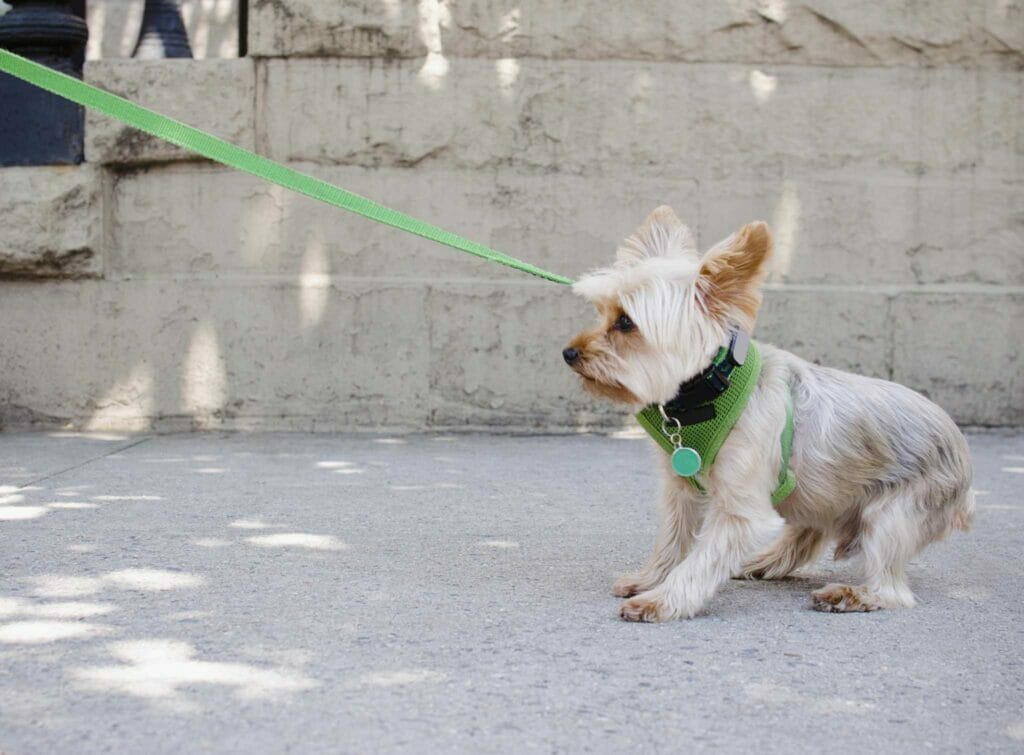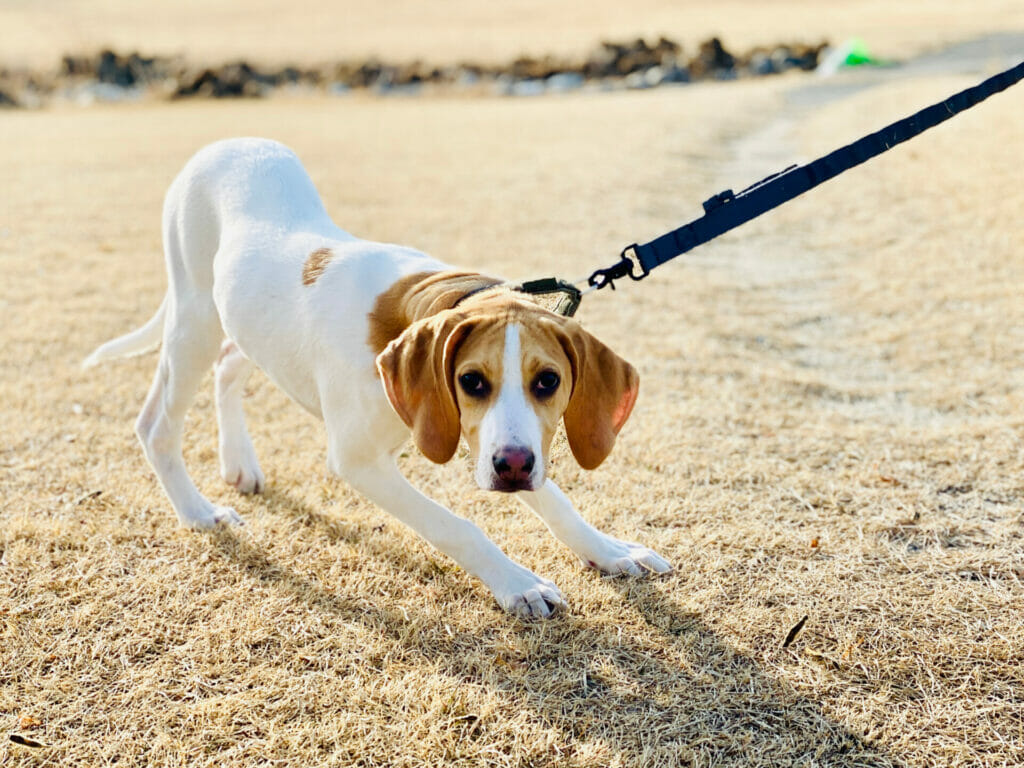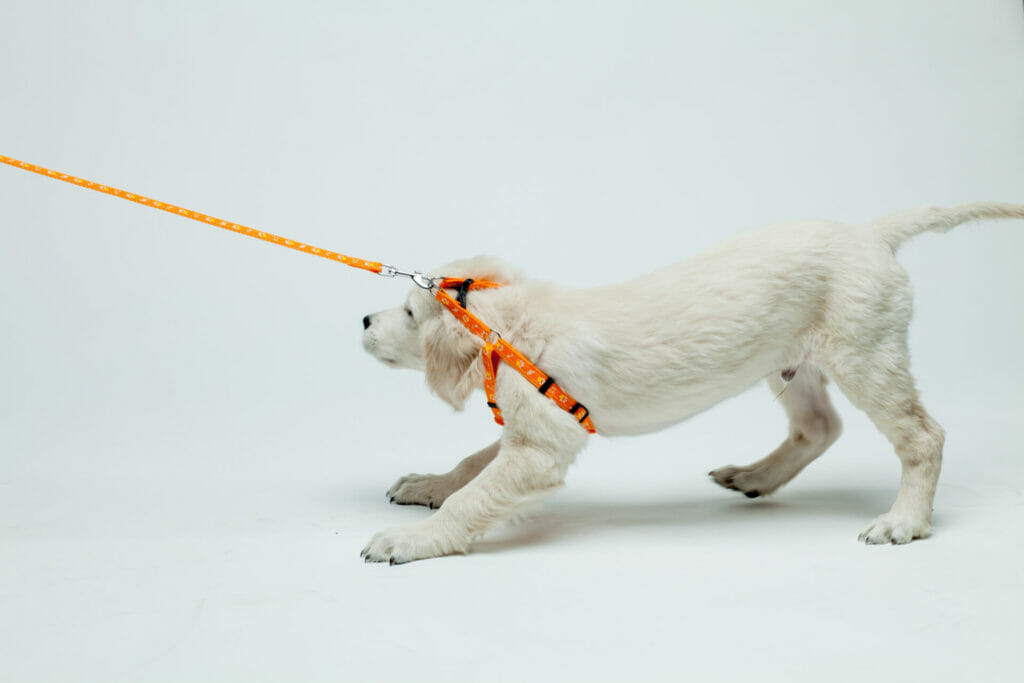Dog Won’t Go On A Walk What do I do? Having a dog who won’t walk can be challenging and frustrating. They might freeze and won’t walk on the leash, or perhaps they run and hide when you get their leash and harness out and won’t go for a walk at all!
If you’re looking for help with this, we’ve got you covered. Let’s figure out why your dog won’t walk and give you some strategies and training tips so you and your dog can enjoy walking together again.

Dog won’t walk on leash! Why?
A dog who won’t walk may have had a bad experience outside; this could be an adverse reaction from another dog, a fear of traffic or sounds, feeling the cold, or being in a sensitive period. They could also be ill, in pain, or have an ill-fitting harness or collar.
Other dogs
If your dog has had a bad experience with other dogs, this can make them worry about leaving your home’s safety and make them not want to go for walks or walk on a leash.
Sound phobia
If you live in a busy city and your puppy needs to be exposed to traffic and the hum of daily life, they may be afraid to go for walks at first. This is also true for dogs who haven’t gotten used to living in the city or developed a sound phobia over time.
The dog doesn’t like the environment.
Dogs have a preference for places they like to walk, no, they might not like going along the streets, but it’s a big YES to a sniffy walk in the park. Can’t blame them, can you?

Your dog might be cold.
Dogs get used to our heated and snug homes, so taking them out can be uncomfortable when the temperature has dropped.
Puppy in a fear period
Puppies have several sensitive periods from 10 weeks right through to adulthood. They can become scared or jumpy around things they weren’t previously worried about. It can also be scary to go outside, so your puppy might not want to go for a walk and leave their ‘safe space.’
Illness and pain
It makes sense that if your dog is feeling sick or has joint or muscle pains, it won’t want to walk on a leash or go outside for a walk. Could this be why your dog doesn’t want to go for a walk?

Collar or harness trouble
If your dog has to put on walking gear that hurts or is uncomfortable, it may not want to go for a walk. If your dog runs away when you get its collar or harness out, make sure it isn’t causing them pain or rubbing anywhere.
What can I do to help my dog, like walks?
To get your dog to walk on a leash and start to enjoy walks again, try some of the following tips:
Get them a comfortable harness and a good-length lead
Comfort is everything, right? A fleece-lined harness or soft padded fabric harness suits most dogs and shouldn’t rub them. Use plenty of treats and practice putting them on and taking them off indoors.
Get them a coat or jumper
Small dogs especially feel the cold as they’re closer to the floor and the cold sidewalks. Get them a snug coat to help them deal with the cold, to help them like walking again.
Train lead walking inside
Practice walking in a relaxed environment, so your dog understands that walking next to you = plenty of treats!
Try a carrier, stroller, or driving for your A to Bs.
So often, we get stressed because our dogs won’t walk to the park, but when they get to the park, they’re fine! By providing them with the comfort and safety of not having to walk on the floor along busy streets, we can take the anxiety out of walks.
Make walks fun
Take your dog to places they want to go, play games and practice positive reinforcement training with their favorite food or high-value reinforcers so that going for walks is fun.
It’s also worth getting your dog checked by your Veterinarian to rule out any medical issues.
Should I force my dog to walk if he doesn’t want to?
No, if your dog doesn’t want to walk, you mustn’t drag them around and force them. Instead, go through our tips and use plenty of praise and treats to help your dog learn that walks are fun! You can physically tire them out by playing games like tug and fetch and mentally stretch them by using puzzle feeders and enrichment games indoors.




















